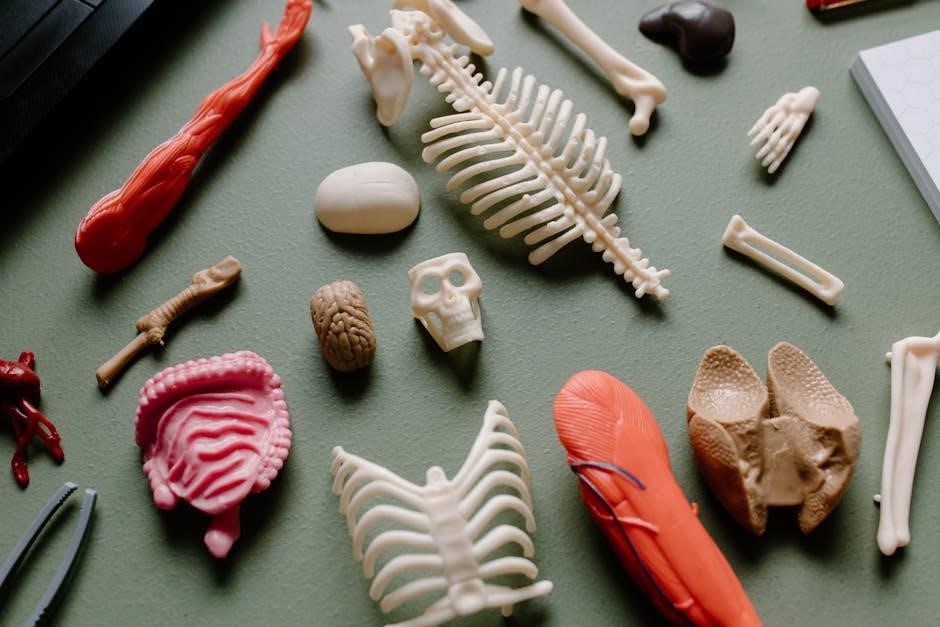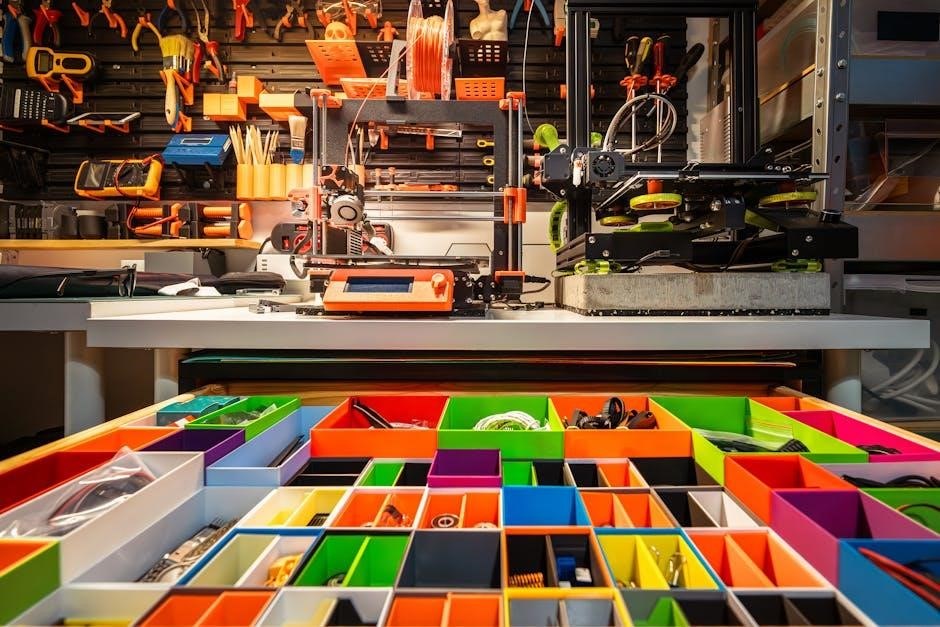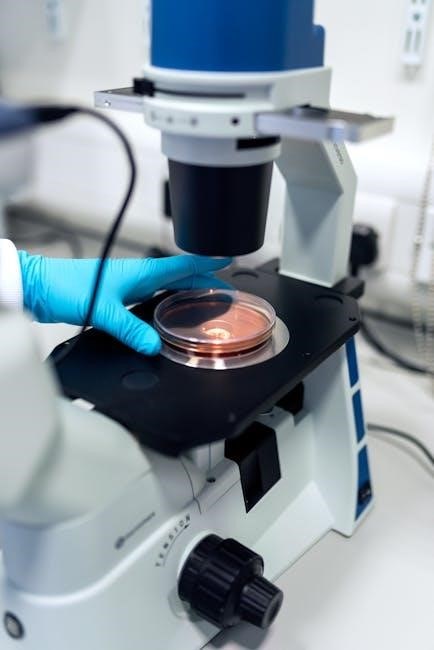The microscope consists of various components that work together to achieve specific functions‚ understanding these parts is crucial for effective use and maintenance of the equipment properly always.
Definition and Purpose of a Microscope
A microscope is a high precision optical instrument that uses a lens or a combination of lenses to produce highly magnified images of small specimens or objects. The purpose of a microscope is to enlarge small objects or samples‚ allowing for detailed observation and study. This is achieved through the use of optical parts‚ such as lenses and light sources‚ which work together to produce a magnified image. The definition of a microscope is closely tied to its purpose‚ as it is designed to provide a means of observing and studying small objects that are not visible to the naked eye. By using a microscope‚ scientists and researchers can gain a better understanding of the structure and behavior of small objects‚ which can lead to new discoveries and advancements in various fields. Microscopes are essential tools in many fields of science.

Optical Parts of a Microscope
Optical parts include lenses and light sources to produce magnified images of specimens clearly always.
Eyepiece and Its Function
The eyepiece‚ also known as the ocular‚ is a crucial part of the microscope‚ it is used to look through the microscope and is located at the top.
The eyepiece is closest to the viewer’s eye and is used to observe the specimen‚ it works in conjunction with the objective lens to produce a magnified image.
The eyepiece is typically a removable part and can be interchanged with different magnification powers‚ it is an essential component of the microscope and plays a vital role in the observation process.
Understanding the function of the eyepiece is important for effective use of the microscope‚ it allows for the observation of specimens in detail and with clarity‚ the eyepiece is a fundamental part of the microscope’s optical system.
The eyepiece is used in conjunction with other parts to produce a clear image‚ it is a vital component of the microscope.

Components of a Microscope
Microscope components include mechanical and optical parts working together seamlessly always.
Illuminators and Electrical Wiring Systems
Illuminators and electrical wiring systems are essential components of a microscope‚ providing the necessary light to view specimens and samples. These systems are typically located in the base of the microscope and consist of a light source‚ such as a bulb or LED‚ and a wiring system that connects to a power source. The illuminators and electrical wiring systems work together to provide a consistent and controlled light output‚ which is crucial for observing and studying specimens. Proper maintenance and care of these systems is important to ensure optimal performance and longevity of the microscope. The electrical wiring systems are designed to be safe and efficient‚ with features such as overload protection and thermal cutoffs to prevent damage to the microscope or injury to the user.

Understanding Microscope Parts
Understanding microscope parts is crucial for effective use and maintenance of equipment properly always with great care and attention to details every time.
Importance of Familiarity with Microscope Components
Familiarity with microscope components is essential for scientists and students to optimize the use of the microscope and prevent damage. The microscope consists of various parts that work together to achieve specific functions. Understanding these parts and their roles enables individuals to use the microscope effectively and maintain it properly. This knowledge also helps to prevent stability issues and ensures the microscope remains in good working condition. Additionally‚ familiarity with microscope components allows users to troubleshoot problems and make necessary adjustments to achieve optimal results. Overall‚ knowing the different parts of a microscope and their functions is crucial for successful microscopy and research applications‚ and it is an important aspect of scientific inquiry and discovery‚ with many benefits and advantages. Proper use and maintenance are also critical for longevity.

Types of Microscopes
Various microscopes exist‚ including optical and other types‚ each serving specific purposes and applications always used.
Optical Microscope and Its Uses
An optical microscope is a type of microscope that uses visible light and a system of lenses to magnify images of small samples. The optical microscope is the simplest form of microscope and is widely used in various fields such as biology‚ medicine‚ and materials science. It has tools that are used to observe the small details of specimens‚ allowing for a better understanding of their structure and composition. The optical microscope is also used in education and research‚ providing a valuable tool for students and scientists to study and analyze small specimens. Overall‚ the optical microscope is an essential instrument in many fields‚ providing a unique perspective on the microscopic world‚ and its uses continue to expand and evolve with advances in technology and scientific discovery always.
Microscope Functions and Applications
Viewing and producing images of specimens is a primary function of microscopes always used.
Viewing‚ Magnifying‚ and Producing Images
The process of viewing‚ magnifying‚ and producing images of specimens is a complex one‚ involving various components of the microscope.
The optical parts of the microscope‚ including the eyepiece and objective lenses‚ work together to produce a magnified image of the specimen.
The image is then viewed through the eyepiece‚ allowing the user to observe the specimen in detail.
The microscope is also capable of producing images of the specimen‚ which can be captured using a camera or other imaging device.
This allows for further analysis and study of the specimen‚ and can be useful in a variety of fields‚ including biology‚ medicine‚ and materials science.
The ability to view‚ magnify‚ and produce images of specimens is a key function of the microscope‚ and is essential for many scientific and medical applications.
The microscope is a valuable tool in many fields‚ and its ability to produce high-quality images is a major part of its usefulness.